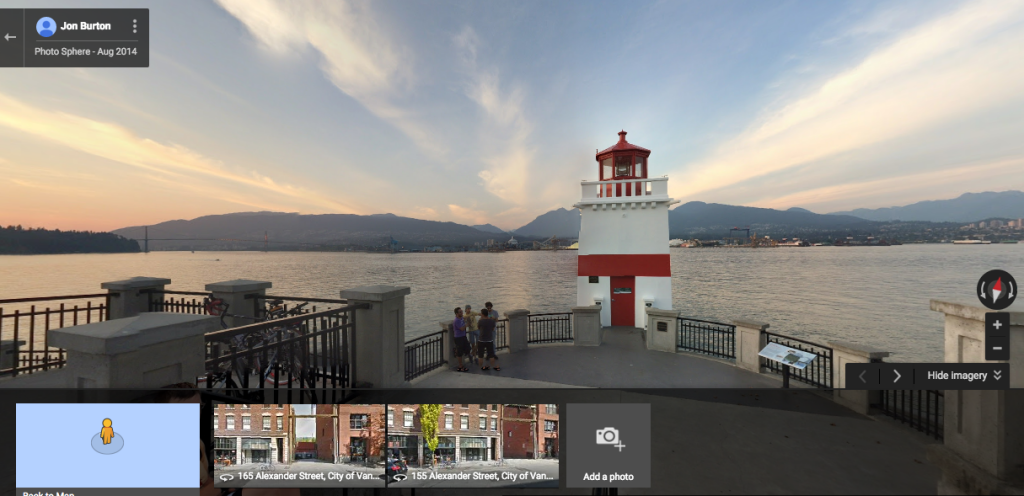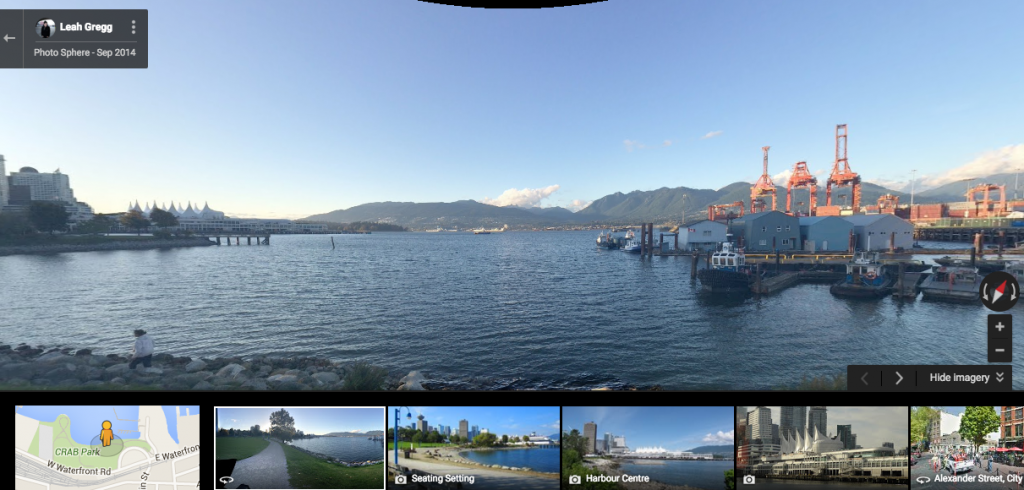
“There is a sound for pain. Love, there is a sound for love. Joy, there is a sound for everything. Young sounds, old sounds, deep belly sounds, tiny bird sounds. A breath and I am there.”
— Ashes on the Water
In the last blog we immersed ourselves in cyberspace, and clicked through poetry. In this case, we’re walking down the middle of a street and into the ocean. Quelemia Sparrow gets into our ears and through our eyes we see history unfold IRL.
It’s a long time ago, 1886. But here, walking amidst concrete with earplugs stuffed in our ears, the immaterial washes over us and becomes tangible. By listening intently, we see into the past. The Great Fire of 1886 arrives.
I’d like to focus on how a few elements of sound achieve this arrival, keeping in mind a passage from performance artist Ann Hamilton that keeps swishing around in my head: “Hearing is how we touch at a distance.”
Ashes on the Water uses sound brilliantly. Sparrow weaves together a handful of components that serve to disrupt our sense of place, direct our attention and pull us into the narrative.
There is the ambient sound – the waves, the fire, the wind. These sounds merge with the ambient noises leaking through our headphones and keep us entranced and unsure of ourselves. Is that the past I hear or is it now?
Then there are the voices. The protagonists take turns narrating, speaking their thoughts and dialoguing.
But it is Paddle Song herself who brings us completely out of the events and into another place:
“I came into this world through the ashes of destruction,” says Paddle Song.
“It started off with what felt like a deep yawn. A deep yawn that shot across the inlet, through the paddles that cut the water surface and into the hearts of the people.”
A single tone is cut up and reverberates as a collection of breaths multiply and heave around it. A drum beats. A rattle shakes. A rhythm forms and Paddle Song emerges. It’s a kind of audio poetry. Artist Ann Hamilton describes radio as “a condition that allows many people to occupy together, even in their aloneness.” This is what it felt like for me.
In a way it’s similar to a short film called Nikamowin by Kevin Lee Burton. In that short film, the narrator teaches another a few words of Cree. The narrator is the Cree language. Much like here, we have the Paddle Song narrating. In both cases, the song transforms and directs the listener to a place beyond the immediate.
Despite the lyrical beauty of the soundscape, what I found most intriguing were the sound cues sprinkled throughout the piece. We are instructed where to stand, in what direction to look and when to walk. As if a director is sitting somewhere just behind our shoulder. At first I found it off-putting. Then again, I was listening while doing the dishes. I didn’t need a cue. I wanted a story.
(I made it to CRAB park, but I forgot to download the file and so I wandered there, untethered by sound directives and totally lost.)
The second time I listened I opened up Google Maps and streetviewed the podplay. Probably not what Sparrow intended. But it afforded a way into history. This time the cues are functional. I think this detached human voice does more than simply direct us. Or rather, that this direction serves a specific purpose.
It reveals the listener as actor. As performer in the space (the space that is real life — a road and park crawling with civilians and leashed dogs — but also in this instance, a stage… and in my instance with Google Maps, a cyberspace). We follow the cues and so we submit to the demands of the artwork.
This might be going too far, but perhaps this disembodied directorial voice compels us to belong to this history, as settlers, as Indigenous people, as newcomers.
We cannot trace the narrative (literally, with our feet!) ourselves. We’re confronted with a jarring reminder. By being told where to walk, we are reminded of our situatedness. The contemporary cityscape and the complexities of this particular neighbourhood born out of the past to which are ears are attached. The directorial cue demands that we walk directly into that tension and submit, as an actor might, to the narrative reified. The cues are more than simply cues.

Sources:
Ann Hamilton, “On Being”: http://www.onbeing.org/program/ann-hamilton-making-and-the-spaces-we-share/6147
What a beautiful quotation to open this exceptional post. You’ve done a lot to tease out the implications of sound in Sparrow’s work and I love the inclusion of Nikamowin, one of my favourite pieces from Burton. If anything, I think you could spend more time unpacking the theory you’re working with here (Hamilton seems a little dropped in) and explore more fully the relationship between sound and touch–the connections to land and bodies seem vital to me, particularly in the wake of Todd’s criticism of cyberspace. Great work; thanks for sharing these thoughts.